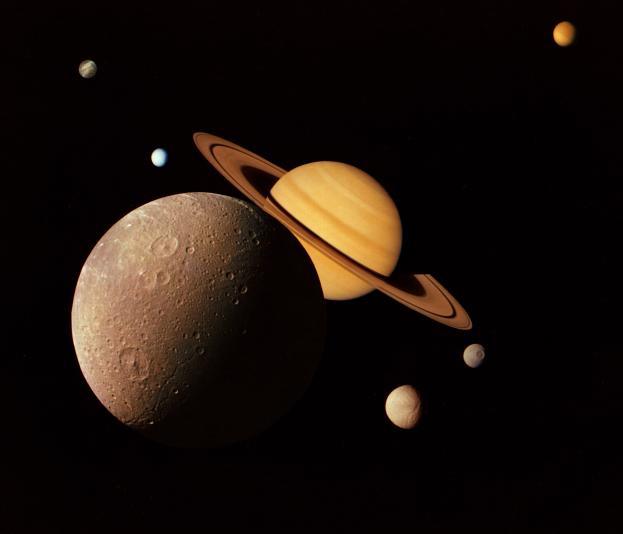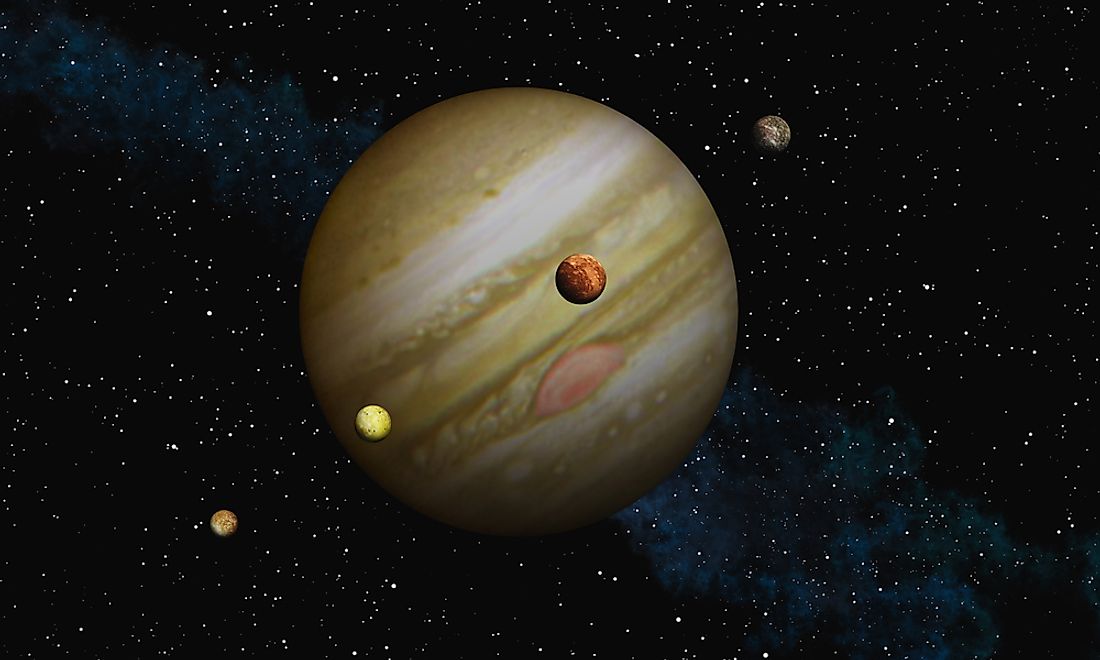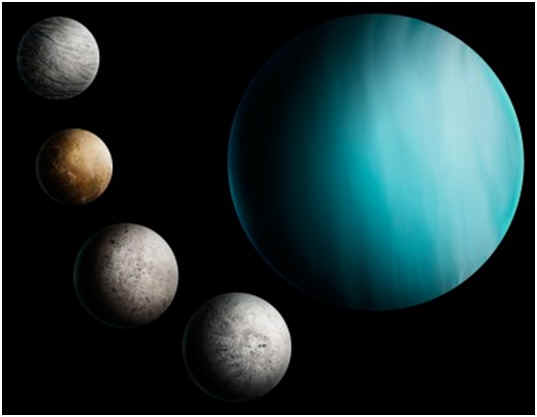The Moons of Neptune
Due to its great distance from the Earth it is extremely difficult for us to see any of Neptune’s moons. For that reason most of its moons were not discovered until 1989 when NASA sent a satellite to explore the world. Today we know of 13 moons. However, there are almost certainly many more orbiting Neptune which we have not yet discovered.
Inner Moons |
|
Naiad Naiad is the closest moon to the surface of Neptune. Naiad is too small to be shaped like a ball. Instead it is irregularly shaped, more like an asteroid. This world was discovered in 1989 by Voyager 2. In Greek Mythology the Naiads were nymphs who lived in and took care of springs, rivers and fountains.
|
Sorry no picture |
Thalassa Discovered in 1989 by Voyager 2, Thalassa is a small, irregularly shaped world. Thalassa was a daughter of Aether and Hemera in Greek Mythology.
|
|
Despina The third of Neptune’s known moons is the world of Despina. This small icy world was discovered in 1989 by Voyager 2. In Greek Mythology Despina is the daughter of Neptune and Demeter.
|
|
Galatea Neptune’s fourth moon is named Galatea. Galatea was discovered by Voyager 2 in 1989. Galatea was a Sicilian who was loved by the Cyclops Polyphemus.
|
|
Outer Moons |
|
Larissa Discovered by Harold Reitsema, Larissa is the fifth of Neptune’s moons. Larissa is a small, heavily cratered world. Its cratered surface suggests that it is probably very old. Larissa was a daughter of Pelasgus.
|
|
Proteus Proteus is Neptune’s second largest moon, but it is still not very big. As you can see by looking at the picture, this world is not very round. That is because its gravity is not strong enough to pull it into a ball shape. Proteus was a god of the sea, capable of changing his shape. |
|
Triton Triton is by far the largest of Neptune’s moons. Despite its large size, Triton probably did not form around Neptune. Scientists believe that Triton was captured by Neptune long ago. So where did this large world form? Many scientists today believe that Triton formed as a planet far out in the Solar System. Eventually it was shaken from its orbit and sent in towards Neptune. Because of Neptune’s large size and gravity, Triton was captured as it passed Neptune. Triton orbits around Neptune in the opposite direction of Neptune’s rotation. Triton is slowly getting closer and closer to Neptune’s surface. Eventually, in a very long time, this moon will crash into Neptune. Triton, which was discovered in 1846 by William Lassell, was named after a god of the sea who was the son of Neptune.
|
|
Nereid Nereid is the outermost of Neptune’s moons, and the third largest. This world, which was discovered in 1949 by Kuiper, has a strange shaped orbit. It orbits Neptune in a long skinny oval, not in a short fat oval like the other planets and moons of the Solar System. This strange orbit makes it almost certain that Nereid is a captured asteroid or comet. In Greek Mythology Nereid was a sea nymph.
|
|













